Search Result
Results for "
HaCaT
" in MedChemExpress (MCE) Product Catalog:
3
Biochemical Assay Reagents
6
Isotope-Labeled Compounds
| Cat. No. |
Product Name |
Target |
Research Areas |
Chemical Structure |
-
- HY-N2540
-
|
(±)-5,7-Dihydroxyflavanone; NSC 43318
|
Free Fatty Acid Receptor
|
Others
|
|
(±)-Pinocembrin ((±)-5,7-Dihydroxyflavanone) is a GPR120 ligand able to promote wound healing in HaCaT cell line .
|
-

-
- HY-N1428
-
-

-
- HY-115927
-
|
|
NO Synthase
|
Inflammation/Immunology
|
|
8A8 is a potent proinflammatory factor NO inhibitor with an IC50 of 4.7 μM. 8A8 also significantly inhibits LPS-induced HaCat cell proliferation .
|
-
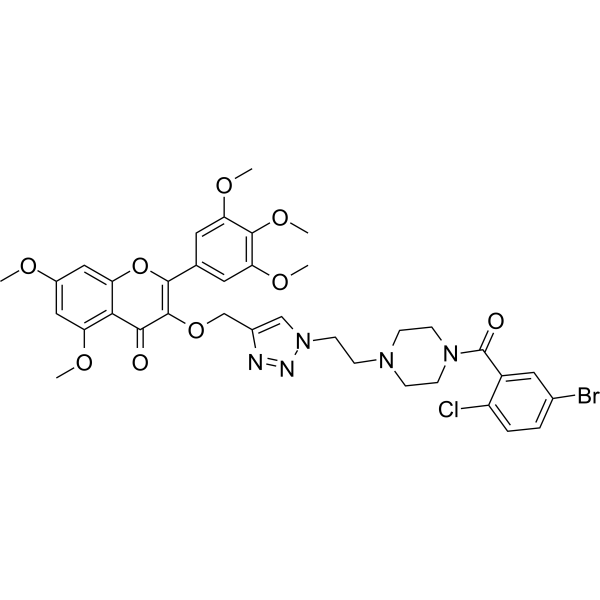
-
- HY-146454
-
|
|
Others
|
Cancer
|
|
Antiproliferative agent-6 (compound 8a) is a potent antitumor agent. Antiproliferative agent-6 has antiproliferative activity against cancer cell lines HCT116, MCF-7, H460 and non-tumor aneuploid immortal keratinocyte HaCaT cells with GI50s of 0.5 μM, 2 μM, 0.7 μM and 3.5 μM, respectively .
|
-
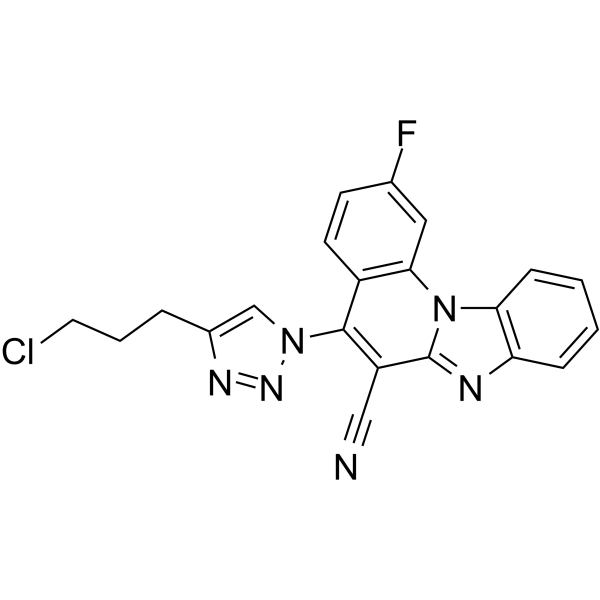
-
- HY-N10623
-
|
|
Tyrosinase
|
Cancer
|
|
5-epi-Arvestonate A is a sesquiterpenoid isolated from the whole plants of Seriphidium transiliense. 5-epi-Arvestonate A promotes melanogenic production by activating the transcription of microphthalmia-associated transcription factor (MITF) and tyrosinase family genes. 5-epi-Arvestonate A inhibits the expression of IFN-γ-chemokine through the JAK/STAT signaling pathway in immortalized human keratinocyte (HaCaT) cells .
|
-
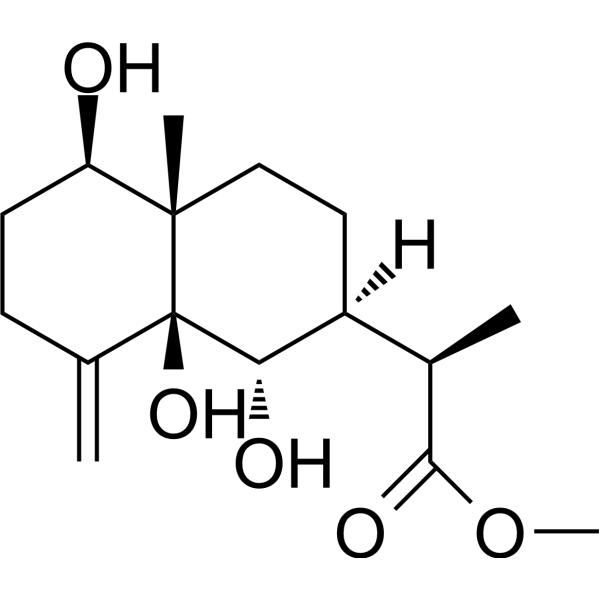
-
- HY-N8593
-
|
|
TNF Receptor
|
Infection
|
|
Undecane has anti-allergic and anti-inflammatory activities on sensitized rat basophilic leukemia (RBL-2H3) mast cells and HaCaT keratinocytes. In sensitized mast cells, Undecane inhibits degranulation and the secretion of histamine and TNF-α [
|
-

-
- HY-N8593S
-
|
|
TNF Receptor
|
Infection
|
|
Undecane-d24 is the deuterium labeled Undecane[1]. Undecane has anti-allergic and anti-inflammatory activities on sensitized rat basophilic leukemia (RBL-2H3) mast cells and HaCaT keratinocytes. In sensitized mast cells, Undecane inhibits degranulation and the secretion of histamine and TNF-α[2].
|
-
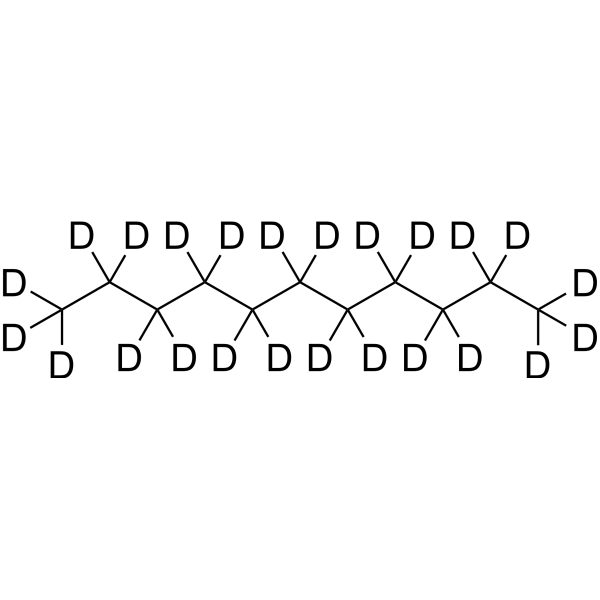
-
- HY-N1190
-
|
(±)-Syringaresinol
|
|
|
|
DL-Syringaresinol ((±)-Syringaresinol), a lignin, inhibits UVA-induced upregulation of MMP-1 by suppressing MAPK/AP-1 signaling in human HaCaT keratinocytes and dermal fibroblasts (HDFs). DL-Syringaresinol has antiphotoaging properties against UVA-induced skin aging. DL-Syringaresinol exhibits weak antimycobacterial activity against Mycobacterium tuberculosis H37Rv .
|
-
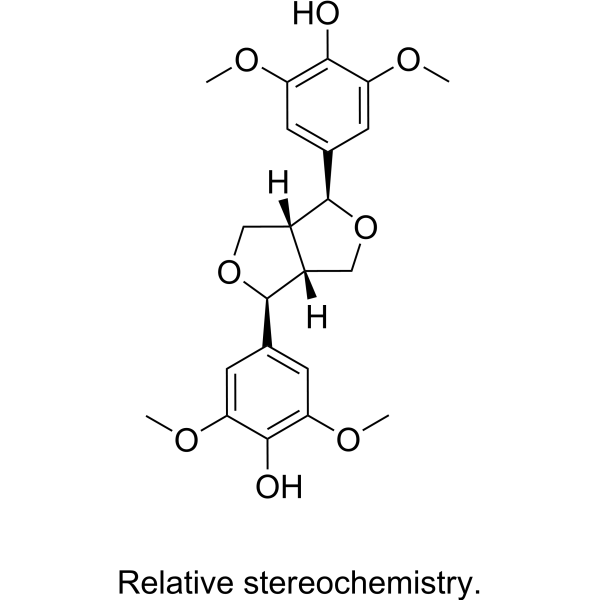
-
- HY-N1428S4
-
|
|
Isotope-Labeled Compounds
Endogenous Metabolite
Apoptosis
Antibiotic
|
Cancer
|
|
Citric acid- 18O is 18O-labeled Citric acid (HY-N1428) Citric acid is a natural preservative and food tartness enhancer. Citric acid induces apoptosis and cell cycle arrest at G2/M phase and S phase in HaCaT cells. Citric acid cause oxidative damage of the liver by means of the decrease of antioxidative enzyme activities. Citric acid causes renal toxicity in mice.
|
-

-
- HY-144761
-
|
|
JNK
|
Cancer
|
|
TOPK-p38/JNK-IN-1 (Compound B12) is an orally active TOPK-p38/JNK signaling pathway inhibitor with the IC50 value of 2.14 µM for NO production. TOPK-p38/JNK-IN-1 shows anti-inflammatory activities. TOPK-p38/JNK-IN-1 also inhibits phosphorylate downstream related proteins and avoids degradation of TOPK .
|
-

-
- HY-N1428S6
-
|
|
Isotope-Labeled Compounds
Endogenous Metabolite
Apoptosis
Antibiotic
|
Cancer
|
|
Citric acid-d4-1 is deuterated labeled Citric acid (HY-N1428) Citric acid is a natural preservative and food tartness enhancer. Citric acid induces apoptosis and cell cycle arrest at G2/M phase and S phase in HaCaT cells. Citric acid cause oxidative damage of the liver by means of the decrease of antioxidative enzyme activities. Citric acid causes renal toxicity in mice.
|
-

-
- HY-N1428S3
-
|
|
Apoptosis
Endogenous Metabolite
Antibiotic
|
|
|
Citric acid- 13C3 is the 13C labeled Citric acid[1]. Citric acid is a natural preservative and food tartness enhancer. Citric acid induces apoptosis and cell cycle arrest at G2/M phase and S phase in HaCaT cells. Citric acid cause oxidative damage of the liver by means of the decrease of antioxidative enzyme activities. Citric acid causes renal toxicity in mice[2][3][4].
|
-

-
- HY-N0273S
-
|
Brassin lactone-d5
|
Isotope-Labeled Compounds
Apoptosis
|
Cancer
|
|
Brassinolide-d5 (Brassin lactone-d5) is the deuterated labeled Brassinolide (HY-N0273). Citric acid is a natural preservative and food tartness enhancer. Citric acid induces apoptosis and cell cycle arrest at G2/M phase and S phase in HaCaT cells. Citric acid cause oxidative damage of the liver by means of the decrease of antioxidative enzyme activities. Citric acid causes renal toxicity in mice .
|
-

-
- HY-P1032S1
-
|
|
Isotope-Labeled Compounds
Endogenous Metabolite
|
Others
|
|
Angiotensin I- 13C5, 15N (human, mouse, rat) is the 13C and 15N labeled Angiotensin I (human, mouse, rat) (HY-P1032). Citric acid is a natural preservative and food tartness enhancer. Citric acid induces apoptosis and cell cycle arrest at G2/M phase and S phase in HaCaT cells. Citric acid cause oxidative damage of the liver by means of the decrease of antioxidative enzyme activities. Citric acid causes renal toxicity in mice .
|
-

-
- HY-N0064
-
-

-
- HY-N0611
-
|
α-Boswellic acid
|
Others
|
Neurological Disease
Inflammation/Immunology
Cancer
|
|
alpha-Boswellic acid (α-Boswellic acid) is an orally active pentacyclic triterpenoid compound that can be extracted from frankincense. alpha-Boswellic acid has anti-inflammatory and antitumor activities. alpha-Boswellic acid can be used in Alzheimer's disease (AD) research .
|
-
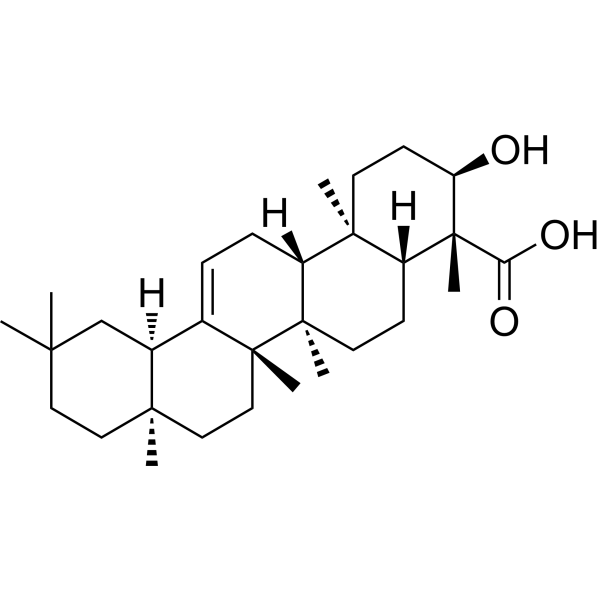
-
- HY-123230
-
|
CGA 279202
|
Fungal
Caspase
PARP
Apoptosis
|
Infection
Neurological Disease
|
|
Trifloxystrobin (CGA 279202) is a type of fungicide. Trifloxystrobin has toxicity, antiparasitic activity and induce apoptosis, oxidative stress and DNA damage. Trifloxystrobin can be used for the reaesrch of fungal diseases .
|
-

-
- HY-146463
-
|
|
DNA/RNA Synthesis
Bacterial
|
Infection
|
|
NusB-IN-1 (Compound 22r) is a potent, orally active bacterial rRNA synthesis inhibitor. NusB-IN-1 shows antimicrobial activity against MRSA and VRSA . NusB-IN-1 is a click chemistry reagent, it contains an Alkyne group and can undergo copper-catalyzed azide-alkyne cycloaddition (CuAAc) with molecules containing Azide groups.
|
-

-
- HY-146051
-
|
|
Bacterial
|
Infection
|
|
Antitubercular agent-18 (Compound 9a) is an antitubercular agent with MIC values of 2, 2, 2 and 128 µg/ml against M. tuberculosis H37Rv, Spec. 192, Spec 210 and Spec. 800, respectively. Antitubercular agent-18 shows highly selective antimycobacterial effects .
|
-
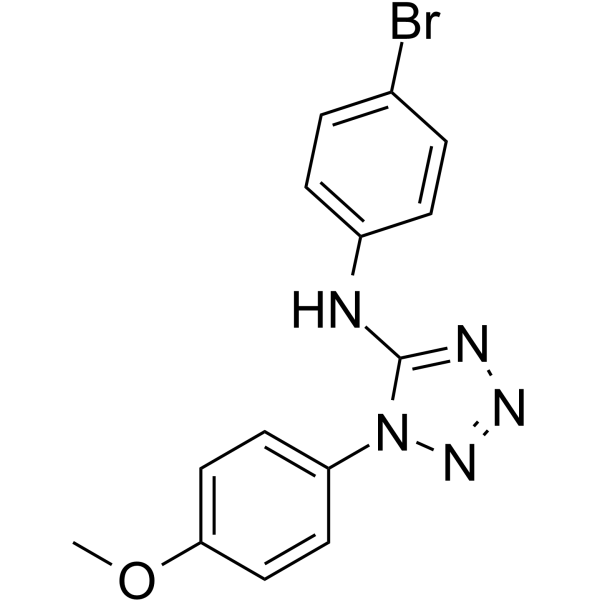
-
- HY-146050
-
|
|
Bacterial
|
Infection
|
|
Antitubercular agent-17 (Compound 8a) is an antitubercular agent with MIC values of 2, 2, 2 and 128 µg/ml against M. tuberculosis H37Rv, Spec. 192, Spec 210 and Spec. 800, respectively. Antitubercular agent-17 shows highly selective antimycobacterial effects .
|
-
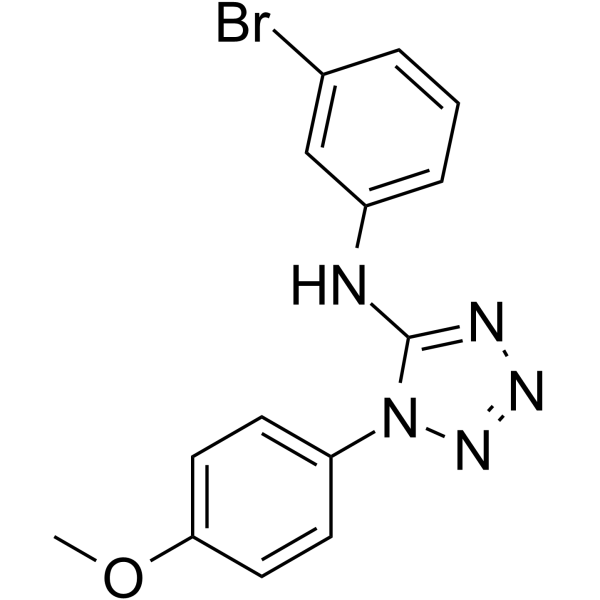
-
- HY-147865
-
|
|
Galectin
Apoptosis
|
Cancer
|
|
Apoptosis inducer 8 (Compound 7c) is a galectin-1 (gal-1) mediated apoptosis-inducing agent against global major leading lung cancer burden. Apoptosis inducer 8 significantly reduced the gal-1 protein level. Apoptosis inducer 8 is also a PET imaging agent .
|
-

-
- HY-W028393
-
-
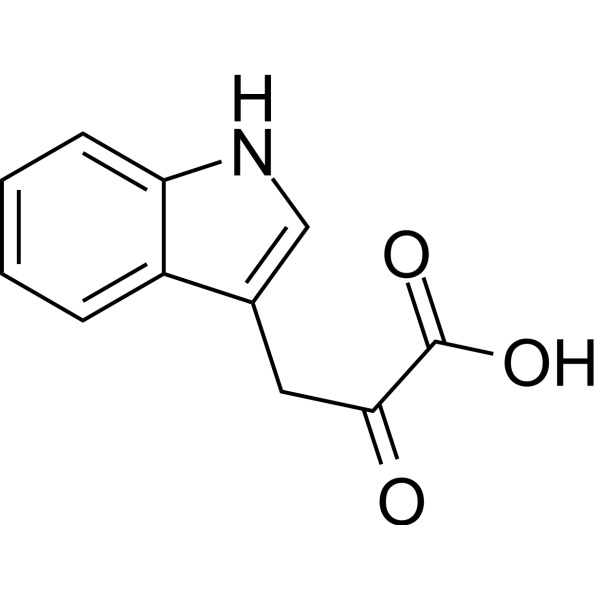
-
- HY-154861
-
|
|
Bacterial
Apoptosis
Necroptosis
|
|
|
Anticancer agent 118, a N‑acylated ciprofloxacin derivative, has anti-bacterial and anticancer activities. Anticancer agent 118 shows high activity against Gram-positive strains and antiproliferative activities against prostate PC3 cells. Anticancer agent 118 can be used for antitumor research .
|
-
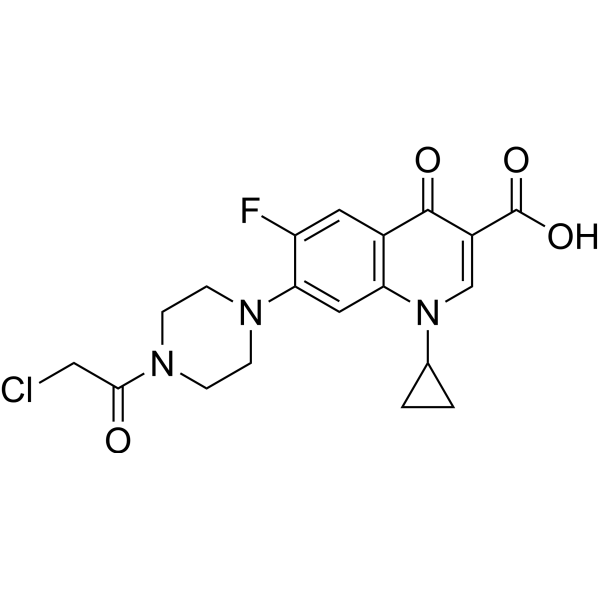
-
- HY-163454
-
|
|
Bacterial
|
Infection
|
|
NorA-IN-2 (compound DZ-3) is a potent NorA inhibitor. NorA-IN-2 shows NorA efflux pump inhibitors (EPI) activity .
|
-

-
- HY-B0736A
-
|
FI7056
|
Fungal
Autophagy
Apoptosis
p38 MAPK
Microtubule/Tubulin
|
Infection
|
|
Sertaconazole nitrate (FI7056) is a broad-spectrum topical antifungal agent, exhibits anti-inflammatory activity via activation of a p38-COX-2-PGE2 pathway. Sertaconazole nitrate is also a microtubule inhibitor, shows antiproliferative effect, induces apoptosis and autophagy, and can also inhibit the migration of cells .
|
-
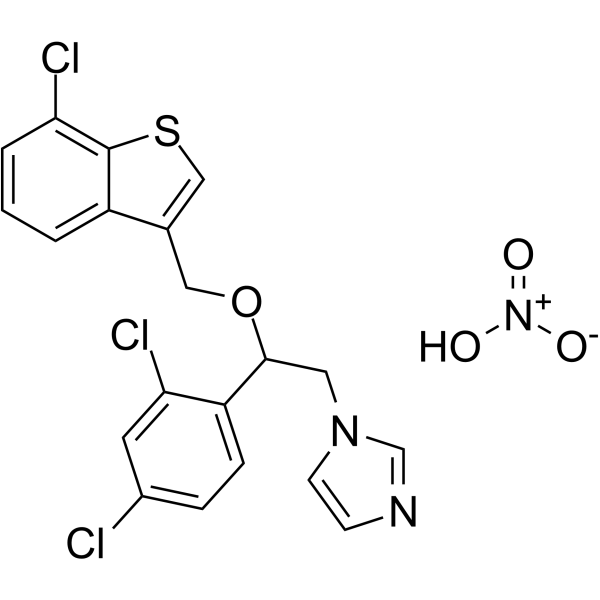
-
- HY-P0097A
-
|
Melanostatine-5 acetate salt
|
Melanocortin Receptor
|
Metabolic Disease
Endocrinology
Cancer
|
|
Nonapeptide-1 (Melanostatine-5) acetate salt, a peptide hormone, is a selective antagonist of MC1R (Ki: 40 nM). Nonapeptide-1 acetate salt is a competitive α-MSH antagonist that potently inhibits intracellular cAMP and melanosome dispersion induced by α-MSH in melanocytes (IC50: 2.5 nM and 11 nM, respectively). Nonapeptide-1 acetate salt inhibits melanin synthesis, and can be used in the research of skin pigmentation and regulation of steroid production in the adrenal gland, skin cancer .
|
-
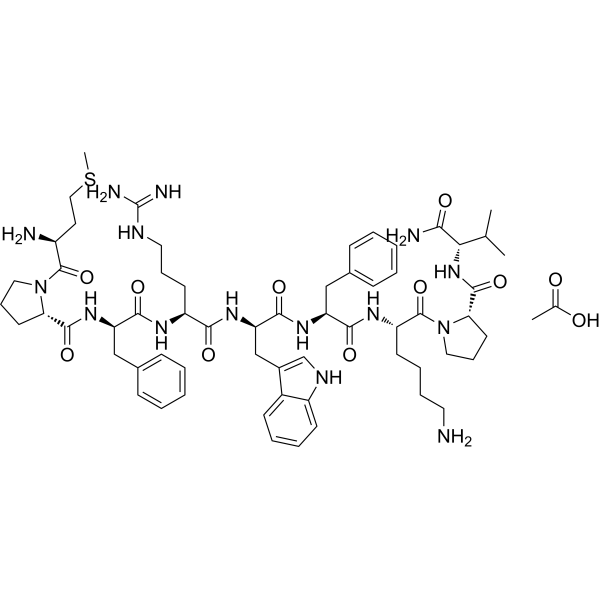
-
- HY-P0097
-
|
Melanostatine-5
|
Melanocortin Receptor
|
Metabolic Disease
Endocrinology
Cancer
|
|
Nonapeptide-1 (Melanostatine-5), a peptide hormone, is a selective antagonist of MC1R (Ki: 40 nM). Nonapeptide-1 is a competitive α-MSH antagonist that potently inhibits intracellular cAMP and melanosome dispersion induced by α-MSH in melanocytes (IC50: 2.5 nM and 11 nM, respectively). Nonapeptide-1 inhibits melanin synthesis, and can be used in the research of skin pigmentation and regulation of steroid production in the adrenal gland, skin cancer .
|
-
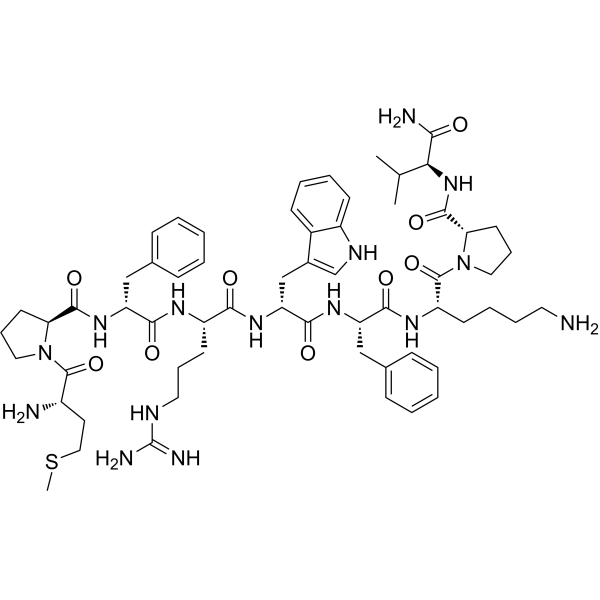
-
- HY-B0736
-
-
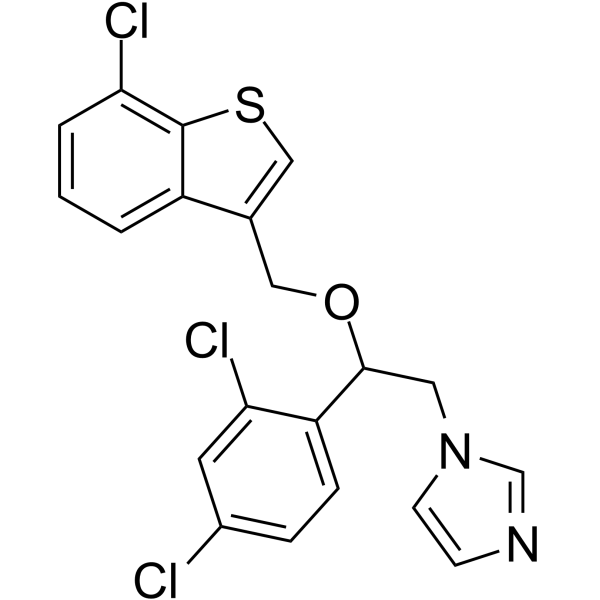
-
- HY-149700
-
|
|
ROCK
MMP
STAT
|
Others
|
|
ROCK2-IN-7 is a kinase inhibitor targeting to ROCK2. ROCK2-IN-7 inhibits ROCK2/pSTAT3 Signaling. ROCK2-IN-7 suppresses systemic immunity activation and attenuates inflammation in psoriasis model .
|
-
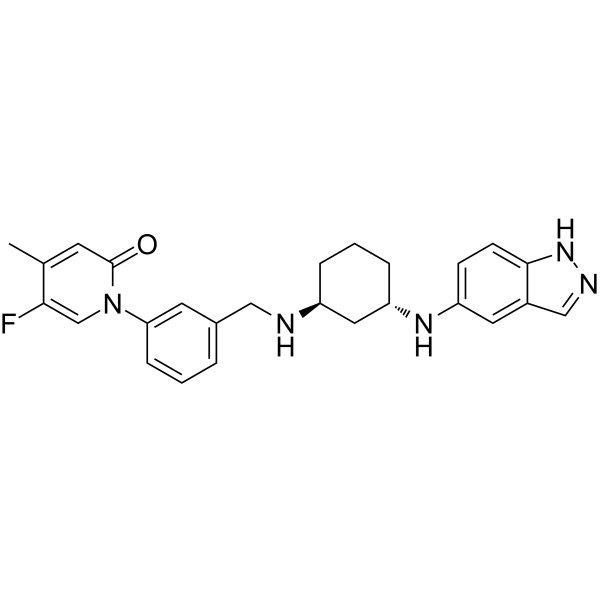
-
- HY-163176
-
|
|
STAT
|
Inflammation/Immunology
|
|
WB518 is a potent STAT3 inhibitor. WB518 effectively inhibits STAT3 activation and Keratin 17 expression. WB518 effectively alleviates imiquimod (HY-B0180) and TPA (HY-18739)-induced animal psoriasis by inhibiting STAT3 phosphorylation and Keratin 17 .
|
-
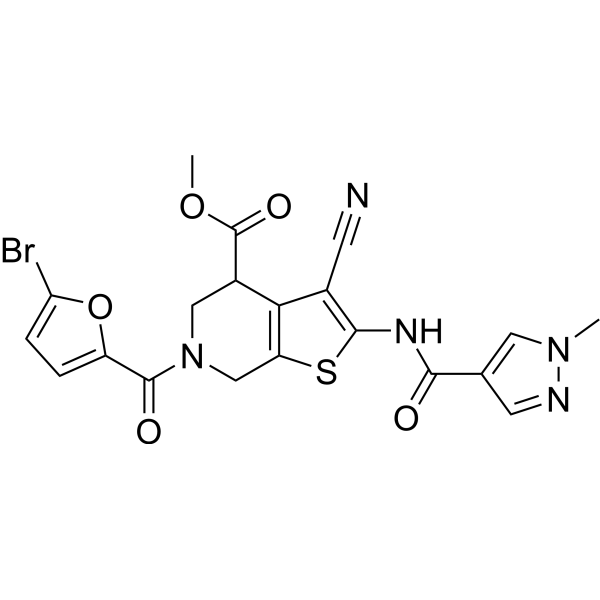
-
- HY-123900
-
-
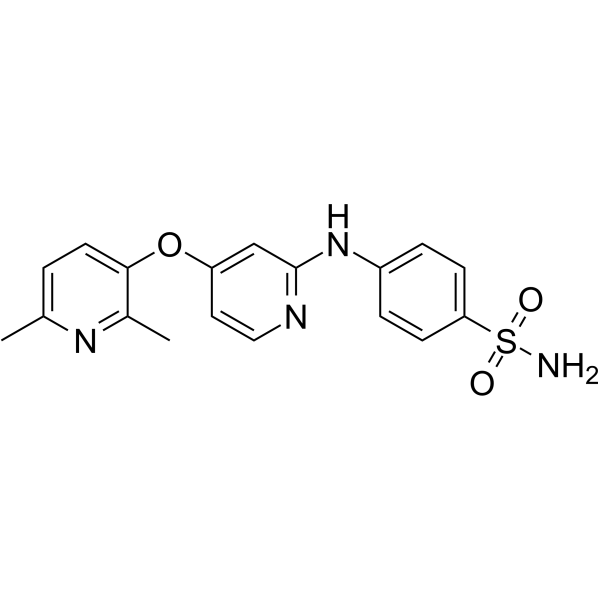
-
- HY-W127530
-
|
alpha-Tocopherol phosphate disodium; TocP disodium; Vitamin E phosphate disodium
|
Apoptosis
Reactive Oxygen Species
|
Cardiovascular Disease
|
|
α-Tocopherol phosphate (alpha-Tocopherol phosphate) disodium, a promising antioxidant, can protect against long-wave UVA1 induced cell death and scavenge UVA1 induced ROS in a skin cell model. α-Tocopherol phosphate disodium possesses therapeutic potential in the inhibition of apoptosis and increases the migratory capacity of endothelial progenitor cells under high-glucose/hypoxic conditions and promotes angiogenesis .
|
-

-
- HY-113599
-
|
|
EGFR
ERK
Akt
|
Others
|
|
Isoprocurcumenol is a guaiane type sesquiterpene, that can be isolated from Curcuma comosa. Isoprocurcumenol can activate EGFR signaling. Isoprocurcumenol increases the phosphorylation of ERK and AKT. Isoprocurcumenol promotes the proliferation of keratinocytes .
|
-
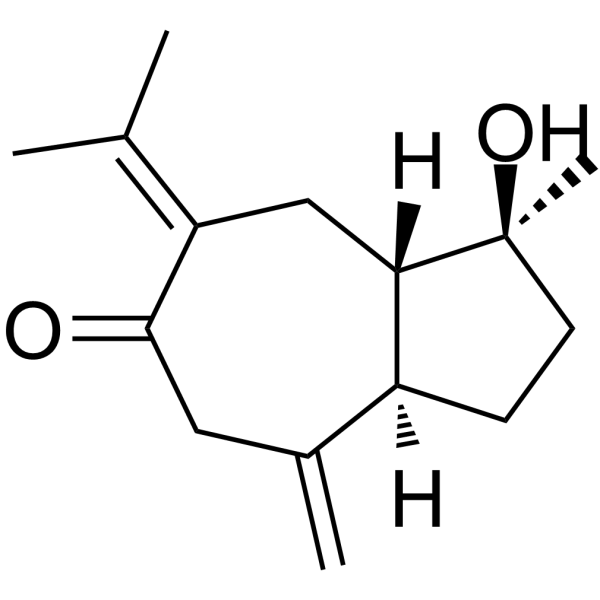
-
- HY-149837
-
|
|
Fluorescent Dye
|
Inflammation/Immunology
|
|
PRO-F is a photoactivable H2S donor with ROS scavenging ability. PRO-F can be activated by light to produce fluorescent signal, for real-time tracking of released H2S. PRO-F activation doesn’t consume endogenous substances. deliver H2S in an intracellular environment to protect cells from excessive reactive oxygen species (ROS) induced damage. PRO-F shows enhancement on chronic wound healing, researched in diabetic models as well .
|
-

-
- HY-P3161
-
|
|
HSV
|
Infection
Inflammation/Immunology
Cancer
|
|
Lactoferrin is a substance released by neutrophils. Lactoferrin is an orally active multifunctional iron binding glycoprotein. Lactoferrin prevents cell adhesion, growth and spreading of cell colonies. Lactoferrin also has antiviral activity and inhibits microbial and viral adhesion and entry into host cells. Besides, Lactoferrin has anti-inflammatory, immunomodulatory, and anti-cancer activities .
|
-
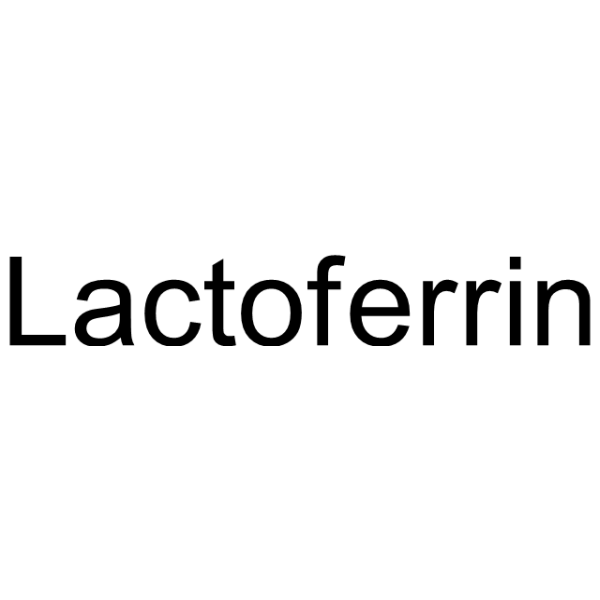
-
- HY-N3612
-
|
(+)-Communic acid
|
Bacterial
Akt
MMP
|
Infection
Inflammation/Immunology
|
|
Communic acid ((+)-Communic acid) is a natural compound isolated from the branches of Platycladus orientalis. Communic acid displays minimum inhibitory concentration of 31 μM and IC50 of 15 μM against M. tuberculosis H37Ra.Communic acid exhibits protective effects against UVB-induced skin aging .
|
-
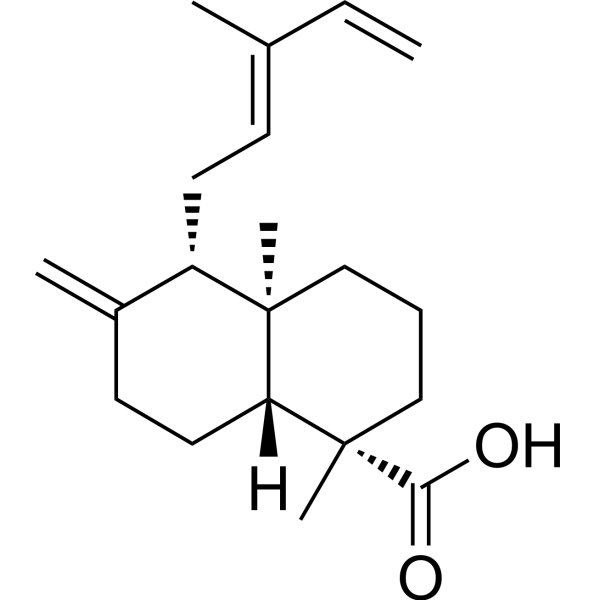
-
- HY-P3513
-
|
|
ERK
MMP
|
Neurological Disease
|
|
β-Neo-Endorphin is an endogenous opioid peptide. β-Neo-Endorphin is a hypothalamic “big” Leu-enkephalin of porcine origin. β-Neo-Endorphin shows activation of the Erk1/2, MMP-2 and MMP-9 .
|
-

-
- HY-41404
-
|
2H-1,3-benzodioxole-5-carboxylic acid
|
Cytochrome P450
Interleukin Related
EGFR
IGF-1R
|
Infection
Others
Cancer
|
|
Piperonylic acid is a natural molecule bearing a methylenedioxy function that closely mimics the structure of trans-cinnamic acid. Piperonylic Acid is a selective, mechanism-based inactivator of the trans-cinnamate 4-Hydroxylase. Piperonylic acid has anticancer, antioxidant and antibacterial activities .
|
-
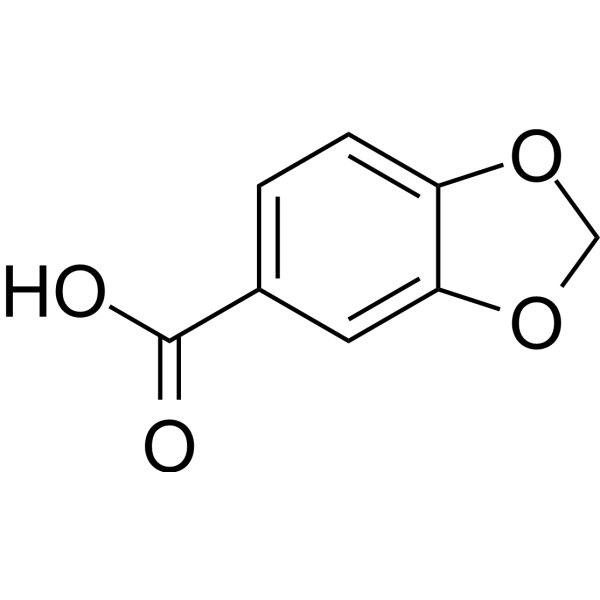
-
- HY-B2201
-
|
Sodium citrate; Trisodium citrate anhydrous
|
Apoptosis
Endogenous Metabolite
|
Metabolic Disease
|
|
Citric acid trisodium is a natural preservative and food tartness enhancer. Citric acid trisodium induces apoptosis and cell cycle arrest at G2/M phase and S phase. Citric acid trisodium cause oxidative damage of the liver by means of the decrease of antioxidative enzyme activities. Citric acid trisodium causes renal toxicity in mice .
|
-

-
- HY-N9093
-
|
|
Others
|
Inflammation/Immunology
Cancer
|
|
(3R,5R)-3,5-Diacetoxy-1-(3,4-dihydroxyphenyl)-7-(4-hydroxyphenyl)heptane, a diarylheptanoid from the rhizomes of Curcuma kwangsiensis, possesses a variety of biological and pharmacological activities including antioxidant, antihepa totoxic, anti-inflammatory, antiproliferative, antiemetic, and antitumor activities .
|
-
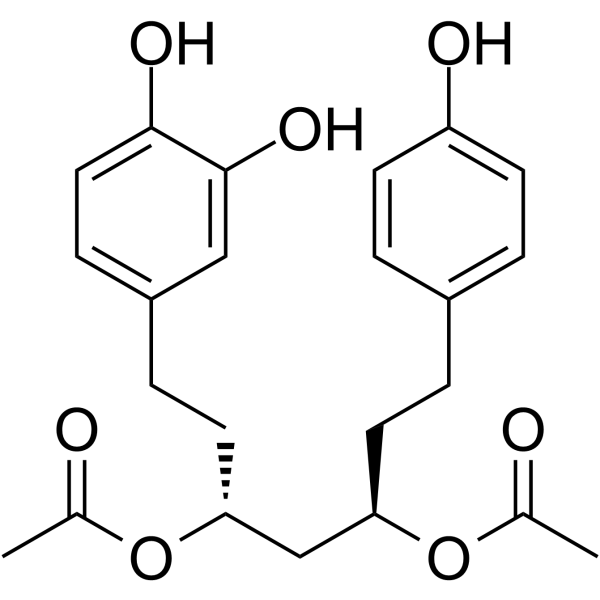
| Cat. No. |
Product Name |
Type |
-
- HY-W127530
-
|
alpha-Tocopherol phosphate disodium; TocP disodium; Vitamin E phosphate disodium
|
Biochemical Assay Reagents
|
|
α-Tocopherol phosphate (alpha-Tocopherol phosphate) disodium, a promising antioxidant, can protect against long-wave UVA1 induced cell death and scavenge UVA1 induced ROS in a skin cell model. α-Tocopherol phosphate disodium possesses therapeutic potential in the inhibition of apoptosis and increases the migratory capacity of endothelial progenitor cells under high-glucose/hypoxic conditions and promotes angiogenesis .
|
-
- HY-P3161
-
|
|
Native Proteins
|
|
Lactoferrin is a substance released by neutrophils. Lactoferrin is an orally active multifunctional iron binding glycoprotein. Lactoferrin prevents cell adhesion, growth and spreading of cell colonies. Lactoferrin also has antiviral activity and inhibits microbial and viral adhesion and entry into host cells. Besides, Lactoferrin has anti-inflammatory, immunomodulatory, and anti-cancer activities .
|
-
- HY-B2201
-
|
Sodium citrate; Trisodium citrate anhydrous
|
Biochemical Assay Reagents
|
|
Citric acid trisodium is a natural preservative and food tartness enhancer. Citric acid trisodium induces apoptosis and cell cycle arrest at G2/M phase and S phase. Citric acid trisodium cause oxidative damage of the liver by means of the decrease of antioxidative enzyme activities. Citric acid trisodium causes renal toxicity in mice .
|
| Cat. No. |
Product Name |
Target |
Research Area |
-
- HY-P0097A
-
|
Melanostatine-5 acetate salt
|
Melanocortin Receptor
|
Metabolic Disease
Endocrinology
Cancer
|
|
Nonapeptide-1 (Melanostatine-5) acetate salt, a peptide hormone, is a selective antagonist of MC1R (Ki: 40 nM). Nonapeptide-1 acetate salt is a competitive α-MSH antagonist that potently inhibits intracellular cAMP and melanosome dispersion induced by α-MSH in melanocytes (IC50: 2.5 nM and 11 nM, respectively). Nonapeptide-1 acetate salt inhibits melanin synthesis, and can be used in the research of skin pigmentation and regulation of steroid production in the adrenal gland, skin cancer .
|
-
- HY-P3513
-
|
|
ERK
MMP
|
Neurological Disease
|
|
β-Neo-Endorphin is an endogenous opioid peptide. β-Neo-Endorphin is a hypothalamic “big” Leu-enkephalin of porcine origin. β-Neo-Endorphin shows activation of the Erk1/2, MMP-2 and MMP-9 .
|
-
- HY-P1032S1
-
|
|
Isotope-Labeled Compounds
Endogenous Metabolite
|
Others
|
|
Angiotensin I- 13C5, 15N (human, mouse, rat) is the 13C and 15N labeled Angiotensin I (human, mouse, rat) (HY-P1032). Citric acid is a natural preservative and food tartness enhancer. Citric acid induces apoptosis and cell cycle arrest at G2/M phase and S phase in HaCaT cells. Citric acid cause oxidative damage of the liver by means of the decrease of antioxidative enzyme activities. Citric acid causes renal toxicity in mice .
|
-
- HY-P0097
-
|
Melanostatine-5
|
Melanocortin Receptor
|
Metabolic Disease
Endocrinology
Cancer
|
|
Nonapeptide-1 (Melanostatine-5), a peptide hormone, is a selective antagonist of MC1R (Ki: 40 nM). Nonapeptide-1 is a competitive α-MSH antagonist that potently inhibits intracellular cAMP and melanosome dispersion induced by α-MSH in melanocytes (IC50: 2.5 nM and 11 nM, respectively). Nonapeptide-1 inhibits melanin synthesis, and can be used in the research of skin pigmentation and regulation of steroid production in the adrenal gland, skin cancer .
|
| Cat. No. |
Product Name |
Category |
Target |
Chemical Structure |
-
- HY-N2540
-
-

-
- HY-N1428
-
-

-
- HY-N0064
-
-

-
- HY-N10623
-
-

-
- HY-N8593
-
-

-
- HY-N0611
-
-

-
- HY-W028393
-
-

-
- HY-113599
-
-

-
- HY-N3612
-
-

-
- HY-41404
-
-

-
- HY-B2201
-
-

-
- HY-N9093
-
|
|
Source classification
Phenols
Curcuma kwangsiensis S. K. Lee & C. F. Liang
Plants
Zingiberaceae
|
Others
|
|
(3R,5R)-3,5-Diacetoxy-1-(3,4-dihydroxyphenyl)-7-(4-hydroxyphenyl)heptane, a diarylheptanoid from the rhizomes of Curcuma kwangsiensis, possesses a variety of biological and pharmacological activities including antioxidant, antihepa totoxic, anti-inflammatory, antiproliferative, antiemetic, and antitumor activities .
|
-

| Cat. No. |
Product Name |
Chemical Structure |
-
- HY-N8593S
-
|
|
|
Undecane-d24 is the deuterium labeled Undecane[1]. Undecane has anti-allergic and anti-inflammatory activities on sensitized rat basophilic leukemia (RBL-2H3) mast cells and HaCaT keratinocytes. In sensitized mast cells, Undecane inhibits degranulation and the secretion of histamine and TNF-α[2].
|
-

-
- HY-N1428S4
-
|
|
|
Citric acid- 18O is 18O-labeled Citric acid (HY-N1428) Citric acid is a natural preservative and food tartness enhancer. Citric acid induces apoptosis and cell cycle arrest at G2/M phase and S phase in HaCaT cells. Citric acid cause oxidative damage of the liver by means of the decrease of antioxidative enzyme activities. Citric acid causes renal toxicity in mice.
|
-

-
- HY-N1428S6
-
|
|
|
Citric acid-d4-1 is deuterated labeled Citric acid (HY-N1428) Citric acid is a natural preservative and food tartness enhancer. Citric acid induces apoptosis and cell cycle arrest at G2/M phase and S phase in HaCaT cells. Citric acid cause oxidative damage of the liver by means of the decrease of antioxidative enzyme activities. Citric acid causes renal toxicity in mice.
|
-

-
- HY-N1428S3
-
|
|
|
Citric acid- 13C3 is the 13C labeled Citric acid[1]. Citric acid is a natural preservative and food tartness enhancer. Citric acid induces apoptosis and cell cycle arrest at G2/M phase and S phase in HaCaT cells. Citric acid cause oxidative damage of the liver by means of the decrease of antioxidative enzyme activities. Citric acid causes renal toxicity in mice[2][3][4].
|
-

-
- HY-N0273S
-
|
|
|
Brassinolide-d5 (Brassin lactone-d5) is the deuterated labeled Brassinolide (HY-N0273). Citric acid is a natural preservative and food tartness enhancer. Citric acid induces apoptosis and cell cycle arrest at G2/M phase and S phase in HaCaT cells. Citric acid cause oxidative damage of the liver by means of the decrease of antioxidative enzyme activities. Citric acid causes renal toxicity in mice .
|
-

-
- HY-P1032S1
-
|
|
|
Angiotensin I- 13C5, 15N (human, mouse, rat) is the 13C and 15N labeled Angiotensin I (human, mouse, rat) (HY-P1032). Citric acid is a natural preservative and food tartness enhancer. Citric acid induces apoptosis and cell cycle arrest at G2/M phase and S phase in HaCaT cells. Citric acid cause oxidative damage of the liver by means of the decrease of antioxidative enzyme activities. Citric acid causes renal toxicity in mice .
|
-

Your information is safe with us. * Required Fields.
Inquiry Information
- Product Name:
- Cat. No.:
- Quantity:
- MCE Japan Authorized Agent:
















































